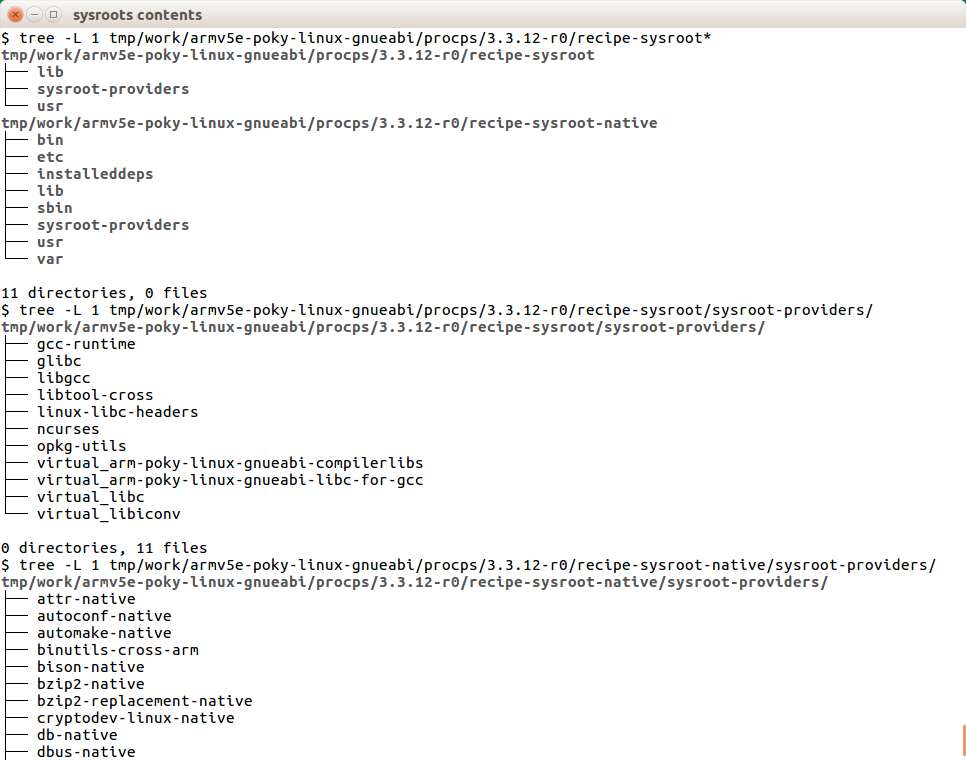Understanding the sysroot directories
Traditionally, the Yocto Project’s sysroot directory was shared among all the recipes and the build system environment, but this has a number of shortcomings as this macro environment has all the dependencies of all recipes previously built, and those libraries and utilities may influence other recipes. Since Yocto Project 2.4 (Rocko), the sysroot structure has been improved to use a recipe-specific sysroot. The content of the sysroot directories are shown in the following figure:

After we build the procps, version 3.3.12, recipe, we get two sets of sysroot directories, as shown in the previous screenshot. The directories are recipes-sysroot-native and recipes-sysroot, and inside each sysroot set, there is a sub-directory called sysroot-provides. This directory lists the packages installed on each sysroot.
recipe-sysroot-native includes the build dependencies used in the host system during the build process. It is critical to the cross-compilation process...



























































